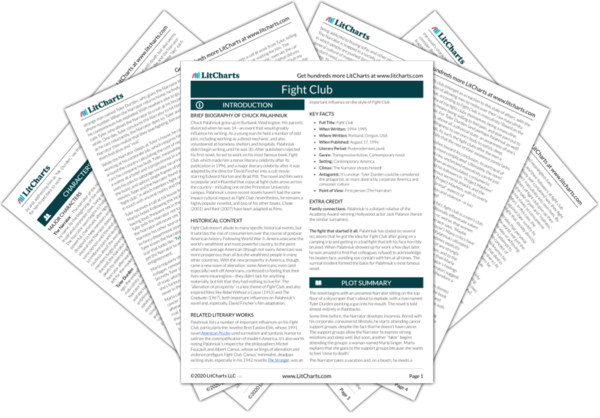LitCharts assigns a color and icon to each theme in Fight Club, which you can use to track the themes throughout the work.
Consumerism, Perfection, and Modernity
Masculinity in Modern Society
Death, Pain, and the “Real”
Repression and the Unconscious Mind
